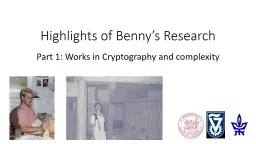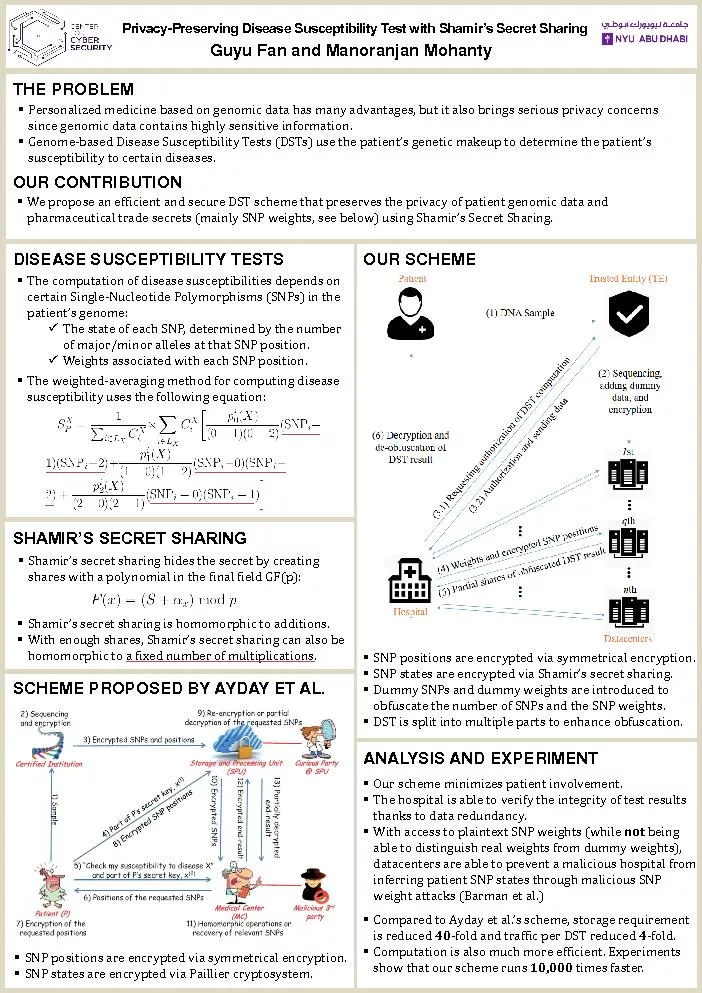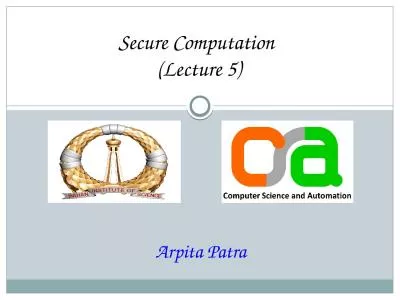PPT-Secret Sharing (or, more accurately, “Secret Splitting”)
Author : giovanna-bartolotta | Published Date : 2019-06-19
Original slides by Nisarg Raval httpwwwcscornelleducoursescs5132000spSecretSharinghtml Material is adapted from CS513 lecture notes Cornell Why split a secret
Presentation Embed Code
Download Presentation
Download Presentation The PPT/PDF document "Secret Sharing (or, more accurately, �..." is the property of its rightful owner. Permission is granted to download and print the materials on this website for personal, non-commercial use only, and to display it on your personal computer provided you do not modify the materials and that you retain all copyright notices contained in the materials. By downloading content from our website, you accept the terms of this agreement.
Secret Sharing (or, more accurately, “Secret Splitting”): Transcript
Download Rules Of Document
"Secret Sharing (or, more accurately, “Secret Splitting”)"The content belongs to its owner. You may download and print it for personal use, without modification, and keep all copyright notices. By downloading, you agree to these terms.
Related Documents














